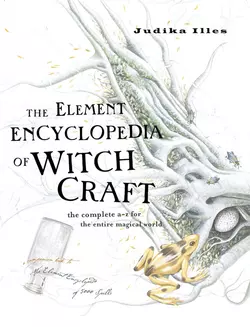The Element Encyclopedia of Witchcraft: The Complete A–Z for the Entire Magical World

Judika Illes
Тип: электронная книга
Жанр: Магия, колдовство
Язык: на английском языке
Стоимость: 1399.60 ₽
Статус: В продаже
Издательство: HarperCollins
Дата публикации: 16.04.2024
Отзывы: Пока нет Добавить отзыв
О книге: Following on from the hugely successful Element Encyclopedia of 5000 Spells, comes the next bumper encyclopedia celebrating all facets of witchcraft. This definite book is the most comprehensive, authoritative and entertaining guide you′ll ever find on the mythology, folklore and traditions of magic.In this mammoth magical treasure trove, Judika Illes explores the history, folklore, spirituality, and mythology of witchcraft. A feast of facts and curiosities, rooted in magical and spiritual traditions, from all over the world, there are recipes from the witch′s cauldron, magical sacred dates, and methods of witches′ flights. Discover how witchcraft has inspired popular culture from Shakespeare to Harry Potter, and how witches have suffered persecution and death in centuries past.Packed full of amazing facts, bizarre information and fascinating stories, you will also be introduced to mythic witches, modern witches, sacred goddess witches, even demon witches, male and female witches, and witches from all over the globe.Ideal for both the dedicated follower and casual reader, as a perfect gift for yourself or someone else to treasure, this definitive encyclopedia is essential reading for anyone interested in folklore, mythology and magic.